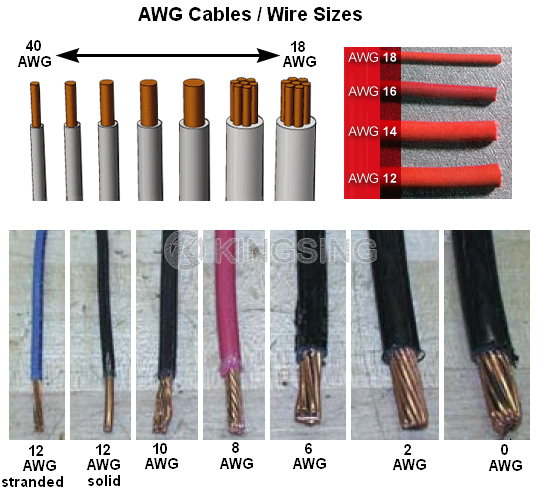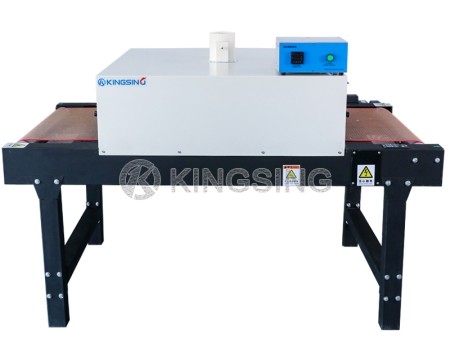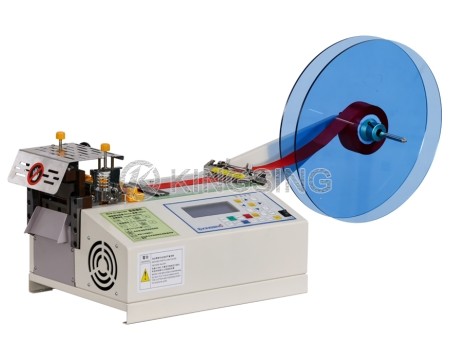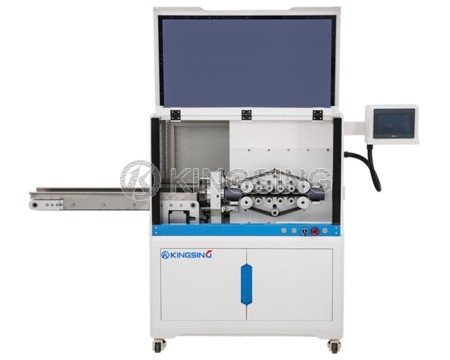Wire Gauge Table - Shanghai Kingsing Auto Co., Ltd.
American wire gauge (AWG), also known as the Brown & Sharpe wire gauge, is a standardized wire gauge system used since 1857 predominantly in North America for the diameters of round, solid, nonferrous, electrically conducting wire. Dimensions of the wires are given in ASTM standard B 258. The cross-sectional area of each gauge is an important factor for determining its current-carrying capacity.
Increasing gauge numbers denote decreasing wire diameters, which is similar to many other non-metric gauging systems such as SWG. This gauge system originated in the number of drawing operations used to produce a given gauge of wire. Very fine wire (for example, 30 gauge) required more passes through the drawing dies than 0 gauge wire did. Manufacturers of wire formerly had proprietary wire gauge systems; the development of standardized wire gauges rationalized selection of wire for a particular purpose.
The AWG tables are for a single, solid, round conductor. The AWG of a stranded wire is determined by the cross-sectional area of the equivalent solid conductor. Because there are also small gaps between the strands, a stranded wire will always have a slightly larger overall diameter than a solid wire with the same AWG.
In the American Wire Gauge (AWG), diameters can be calculated by applying the formula:
D(AWG)=.005·92((36-AWG)/39) inch.
For the 00, 000, 0000 etc. gauges you use -1, -2, -3, which makes more sense mathematically than "double nought." This means that in American wire gage every 6 gauge decrease gives a doubling of the wire diameter, and every 3 gauge decrease doubles the wire cross sectional area. Similar to dB in signal and power levels. An approximate but accurate enough form of this formula contributed by Mario Rodriguez is:
D = .460 * (57/64)(awg +3) or D = .460 * (0.890625)(awg +3).
Wire diameter calculations
The n gauge wire diameter dn in inches (in) is equal to 0.005in times 92 raised to the power of 36 minus gauge number n, divided by 39:
dn (in) = 0.005 in × 92(36-n)/39
The n gauge wire diameter dn in millimeters (mm) is equal to 0.127mm times 92 raised to the power of 36 minus gauge number n, divided by 39:
dn (mm) = 0.127 mm × 92(36-n)/39
Wire cross sectional area calculations
The n gauge wire's cross sercional area An in kilo-circular mils (kcmil)is equal to 1000 times the square wire diameter d in inches (in):
An (kcmil) = 1000×dn2= 0.025 in2 × 92(36-n)/19.5
The n gauge wire's cross sercional area An in square inches (in2)is equal to pi divided by 4 times the square wire diameter d in inches (in):
An (in2) = (π/4)×dn2= 0.000019635 in2 × 92(36-n)/19.5
The n gauge wire's cross sercional area Anin square millimeters (mm2)is equal to pi divided by 4 times the square wire diameter d in millimeters (mm):
An (mm2) = (π/4)×dn2= 0.012668 mm2 × 92(36-n)/19.5
Wire resistance calculations
The n gauge wire resistance R in ohms per kilofeet (Ω/kft) is equal to 0.3048×1000000000 times the wire's resistivity ρ inohm-meters (Ω·m) divided by 25.42 times the cross sectional area An in square inches (in2):
Rn (Ω/kft) = 0.3048 × 109 × ρ(Ω·m) / (25.42× An (in2))
The n gauge wire resistance R in ohms per kilometer (Ω/km) is equal to 1000000000 times the wire's resistivity ρ inohm-meters (Ω·m) divided by the cross sectional area An in square millimeters (mm2):
Rn (Ω/km) = 109× ρ(Ω·m) / An (mm2)
Tables of AWG wire sizes
| Wire Size | SWG | AWG | BWG | ||||||
| Inch | MM | SQMM | Inch | MM | SQMM | Inch | MM | SQMM | |
| 4/0 | 0.4 | 10.16 | 81.073 | 0.46 | 11.68 | 107.145 | 0.454 | 11.53 | 104.411 |
| 3/0 | 0.372 | 9.45 | 70.138 | 0.409 | 10.41 | 85.112 | 0.425 | 10.8 | 91.608 |
| 2/0 | 0.348 | 8.84 | 61.375 | 0.365 | 9.27 | 67.491 | 0.38 | 9.65 | 73.138 |
| 1/0 | 0.324 | 8.23 | 53.197 | 0.325 | 8.25 | 53.456 | 0.34 | 8.64 | 58.629 |
| 1 | 0.3 | 7.62 | 45.603 | 0.289 | 7.35 | 42.429 | 0.3 | 7.62 | 45.603 |
| 2 | 0.276 | 7.01 | 38.594 | 0.258 | 6.54 | 33.592 | 0.283 | 7.21 | 40.828 |
| 3 | 0.252 | 6.4 | 32.169 | 0.229 | 5.83 | 26.694 | 0.259 | 6.58 | 34.004 |
| 4 | 0.232 | 5.89 | 27.247 | 0.204 | 5.19 | 21.155 | 0.238 | 6.05 | 28.747 |
| 5 | 0.212 | 5.38 | 22.732 | 0.182 | 4.62 | 16.763 | 0.22 | 5.59 | 24.542 |
| 6 | 0.192 | 4.88 | 18.703 | 0.162 | 4.11 | 13.267 | 0.203 | 5.16 | 20.911 |
| 7 | 0.176 | 4.47 | 15.692 | 0.144 | 3.66 | 10.52 | 0.179 | 4.57 | 16.402 |
| 8 | 0.16 | 4.06 | 12.946 | 0.128 | 3.26 | 8.346 | 0.164 | 4.19 | 13.788 |
| 9 | 0.144 | 3.66 | 10.52 | 0.114 | 2.9 | 6.605 | 0.147 | 3.76 | 11.103 |
| 10 | 0.128 | 3.25 | 8.295 | 0.102 | 2.59 | 5.268 | 0.134 | 3.4 | 9.079 |
| 11 | 0.116 | 2.95 | 6.834 | 0.091 | 2.3 | 4.154 | 0.12 | 3.05 | 7.306 |
| 12 | 0.104 | 2.64 | 5.473 | 0.081 | 2.05 | 3.3 | 0.109 | 2.77 | 6.026 |
| 13 | 0.092 | 2.34 | 4.3 | 0.072 | 1.83 | 2.63 | 0.095 | 2.41 | 4.561 |
| 14 | 0.081 | 2.03 | 3.236 | 0.064 | 1.63 | 2.086 | 0.083 | 2.11 | 3.496 |
| 15 | 0.072 | 1.83 | 2.63 | 0.057 | 1.45 | 1.651 | 0.072 | 1.83 | 2.63 |
| 16 | 0.064 | 1.63 | 2.086 | 0.051 | 1.29 | 1.306 | 0.065 | 1.65 | 2.086 |
| 17 | 0.056 | 1.42 | 1.583 | 0.045 | 1.15 | 1.038 | 0.058 | 1.47 | 1.697 |
| 18 | 0.048 | 1.22 | 1.168 | 0.04 | 1.02 | 0.817 | 0.049 | 1.24 | 1.207 |
| 19 | 0.04 | 1.02 | 0.817 | 0.036 | 0.91 | 0.65 | 0.042 | 1.07 | 0.899 |
| 20 | 0.036 | 0.92 | 0.664 | 0.032 | 0.81 | 0.515 | 0.035 | 0.89 | 0.58 |
| 21 | 0.032 | 0.81 | 0.515 | 0.028 | 0.72 | 0.407 | 0.031 | 0.81 | 0.515 |
| 22 | 0.028 | 0.71 | 0.395 | 0.025 | 0.64 | 0.321 | 0.028 | 0.71 | 0.395 |
| 23 | 0.024 | 0.61 | 0.292 | 0.023 | 0.57 | 0.255 | 0.025 | 0.64 | 0.321 |
| 24 | 0.023 | 0.56 | 0.246 | 0.02 | 0.51 | 0.204 | 0.023 | 0.56 | 0.246 |
| 25 | 0.02 | 0.51 | 0.204 | 0.018 | 0.45 | 0.159 | 0.02 | 0.51 | 0.204 |
| 26 | 0.018 | 0.46 | 0.166 | 0.016 | 0.4 | 0.125 | 0.018 | 0.46 | 0.166 |
| 27 | 0.016 | 0.41 | 0.132 | 0.014 | 0.36 | 0.101 | 0.016 | 0.41 | 0.132 |
| 28 | 0.014 | 0.38 | 0.101 | 0.013 | 0.32 | 0.08 | 0.0135 | 0.356 | 0.995 |
| 29 | 0.013 | 0.35 | 0.096 | 0.011 | 0.29 | 0.066 | 0.013 | 0.33 | 0.855 |
| 30 | 0.012 | 0.305 | 0.073 | 0.01 | 0.25 | 0.049 | 0.012 | 0.305 | 0.073 |
| 31 | 0.011 | 0.29 | 0.066 | 0.09 | 0.229 | 0.041 | 0.01 | 0.254 | 0.05 |
| 32 | 0.0106 | 0.27 | 0.057 | 0.008 | 0.203 | 0.032 | 0.009 | 0.229 | 0.041 |
| 33 | 0.01 | 0.254 | 0.05 | 0.007 | 0.178 | 0.024 | 0.008 | 0.203 | 0.032 |
| 34 | 0.009 | 0.229 | 0.041 | 0.0063 | 0.16 | 0.02 | 0.007 | 0.178 | 0.024 |
| 35 | 0.008 | 0.203 | 0.032 | 0.0056 | 0.14 | 0.015 | 0.005 | 0.127 | 0.012 |
| 36 | 0.007 | 0.178 | 0.024 | 0.005 | 0.127 | 0.012 | 0.004 | 0.102 | 0.008 |
| 37 | 0.0067 | 0.17 | 0.022 | 0.0044 | 0.11 | 0.009 | |||
| 38 | 0.006 | 0.15 | 0.017 | 0.004 | 0.102 | 0.008 | |||
| 39 | 0.005 | 0.127 | 0.012 | 0.0035 | 0.09 | 0.006 | |||
| 40 | 0.0047 | 0.12 | 0.011 | 0.0031 | 0.08 | 0.005 | |||
American Wire Gauge (AWG) Cable / Conductor Sizes and Properties
| AWG | Diameter [inches] | Diameter [mm] | Area [mm2] | Resistance [Ohms / 1000 ft] | Resistance [Ohms / km] | Max Current [Amperes] | Max Frequency for 100% skin depth |
| 0000 (4/0) | 0.46 | 11.684 | 107 | 0.049 | 0.16072 | 302 | 125 Hz |
| 000 (3/0) | 0.4096 | 10.40384 | 85 | 0.0618 | 0.202704 | 239 | 160 Hz |
| 00 (2/0) | 0.3648 | 9.26592 | 67.4 | 0.0779 | 0.255512 | 190 | 200 Hz |
| 0 (1/0) | 0.3249 | 8.25246 | 53.5 | 0.0983 | 0.322424 | 150 | 250 Hz |
| 1 | 0.2893 | 7.34822 | 42.4 | 0.1239 | 0.406392 | 119 | 325 Hz |
| 2 | 0.2576 | 6.54304 | 33.6 | 0.1563 | 0.512664 | 94 | 410 Hz |
| 3 | 0.2294 | 5.82676 | 26.7 | 0.197 | 0.64616 | 75 | 500 Hz |
| 4 | 0.2043 | 5.18922 | 21.2 | 0.2485 | 0.81508 | 60 | 650 Hz |
| 5 | 0.1819 | 4.62026 | 16.8 | 0.3133 | 1.027624 | 47 | 810 Hz |
| 6 | 0.162 | 4.1148 | 13.3 | 0.3951 | 1.295928 | 37 | 1100 Hz |
| 7 | 0.1443 | 3.66522 | 10.5 | 0.4982 | 1.634096 | 30 | 1300 Hz |
| 8 | 0.1285 | 3.2639 | 8.37 | 0.6282 | 2.060496 | 24 | 1650 Hz |
| 9 | 0.1144 | 2.90576 | 6.63 | 0.7921 | 2.598088 | 19 | 2050 Hz |
| 10 | 0.1019 | 2.58826 | 5.26 | 0.9989 | 3.276392 | 15 | 2600 Hz |
| 11 | 0.0907 | 2.30378 | 4.17 | 1.26 | 4.1328 | 12 | 3200 Hz |
| 12 | 0.0808 | 2.05232 | 3.31 | 1.588 | 5.20864 | 9.3 | 4150 Hz |
| 13 | 0.072 | 1.8288 | 2.62 | 2.003 | 6.56984 | 7.4 | 5300 Hz |
| 14 | 0.0641 | 1.62814 | 2.08 | 2.525 | 8.282 | 5.9 | 6700 Hz |
| 15 | 0.0571 | 1.45034 | 1.65 | 3.184 | 10.44352 | 4.7 | 8250 Hz |
| 16 | 0.0508 | 1.29032 | 1.31 | 4.016 | 13.17248 | 3.7 | 11 k Hz |
| 17 | 0.0453 | 1.15062 | 1.04 | 5.064 | 16.60992 | 2.9 | 13 k Hz |
| 18 | 0.0403 | 1.02362 | 0.823 | 6.385 | 20.9428 | 2.3 | 17 kHz |
| 19 | 0.0359 | 0.91186 | 0.653 | 8.051 | 26.40728 | 1.8 | 21 kHz |
| 20 | 0.032 | 0.8128 | 0.518 | 10.15 | 33.292 | 1.5 | 27 kHz |
| 21 | 0.0285 | 0.7239 | 0.41 | 12.8 | 41.984 | 1.2 | 33 kHz |
| 22 | 0.0254 | 0.64516 | 0.326 | 16.14 | 52.9392 | 0.92 | 42 kHz |
| 23 | 0.0226 | 0.57404 | 0.258 | 20.36 | 66.7808 | 0.729 | 53 kHz |
| 24 | 0.0201 | 0.51054 | 0.205 | 25.67 | 84.1976 | 0.577 | 68 kHz |
| 25 | 0.0179 | 0.45466 | 0.162 | 32.37 | 106.1736 | 0.457 | 85 kHz |
| 26 | 0.0159 | 0.40386 | 0.129 | 40.81 | 133.8568 | 0.361 | 107 kHz |
| 27 | 0.0142 | 0.36068 | 0.102 | 51.47 | 168.8216 | 0.288 | 130 kHz |
| 28 | 0.0126 | 0.32004 | 0.081 | 64.9 | 212.872 | 0.226 | 170 kHz |
| 29 | 0.0113 | 0.28702 | 0.0642 | 81.83 | 268.4024 | 0.182 | 210 kHz |
| 30 | 0.01 | 0.254 | 0.0509 | 103.2 | 338.496 | 0.142 | 270 kHz |
| 31 | 0.0089 | 0.22606 | 0.0404 | 130.1 | 426.728 | 0.113 | 340 kHz |
| 32 | 0.008 | 0.2032 | 0.032 | 164.1 | 538.248 | 0.091 | 430 kHz |
| 33 | 0.0071 | 0.18034 | 0.0254 | 206.9 | 678.632 | 0.072 | 540 kHz |
| 34 | 0.0063 | 0.16002 | 0.0201 | 260.9 | 855.752 | 0.056 | 690 kHz |
| 35 | 0.0056 | 0.14224 | 0.016 | 329 | 1079.12 | 0.044 | 870 kHz |
| 36 | 0.005 | 0.127 | 0.0127 | 414.8 | 1360 | 0.035 | 1100 kHz |
| 37 | 0.0045 | 0.1143 | 0.01 | 523.1 | 1715 | 0.0289 | 1350 kHz |
| 38 | 0.004 | 0.1016 | 0.00797 | 659.6 | 2163 | 0.0228 | 1750 kHz |
| 39 | 0.0035 | 0.0889 | 0.00632 | 831.8 | 2728 | 0.0175 | 2250 kHz |
| 40 | 0.0031 | 0.07874 | 0.00501 | 1049 | 3440 | 0.0137 | 2900 kHz |
AWG Notes: American Wire Gauge (AWG) is a standardized wire gauge system used predominantly in the United States to note the diameter of electrically conducting wire.The general rule of thumb is for every 6 gauge decrease the wire diameter doubles and every 3 gauge decrease doubles the cross sectional area.
Diameter Notes: A mil is a unit of length equal to 0.001 inch (a "milli-inch" or a "thousandth of one inch")ie. 1 mil = 0.001".
Resistance Notes: The resistance noted in the table above is for copper wire conductor.For a given current, you can use the noted resistance and apply Ohms Law to calculate the voltage drop across the conductor.
Current (ampacity) Notes: The current ratings shown in the table are for power transmission and have been determined using the rule of1 amp per 700 circular mils, which is a very conservative rating.For reference, the National Electrical Code (NEC) notes the following ampacity for copper wire at 30 Celsius:
14 AWG - maximum of 20 Amps in free air, maximum of 15 Amps as part of a 3 conductor cable;
12 AWG - maximum of 25 Amps in free air, maximum of 20 Amps as part of a 3 conductor cable;
10 AWG - maximum of 40 Amps in free air, maximum of 30 Amps as part of a 3 conductor cable.
Check your local electrical code for the correct current capacity (ampacity) for mains and in wall wiring.
Skin Effect and Skin Depth Notes: Skin effect is the tendency of an alternating electric current (AC) to distribute itself within a conductor so that the current density near the surface of the conductor is greater than that at its core. That is, the electric current tends to flow at the "skin" of the conductor. The skin effect causes the effective resistance of the conductor to increase with the frequency of the current.Themaximum frequency show is for 100% skin depth (ie. no skin effects).

 English
English









